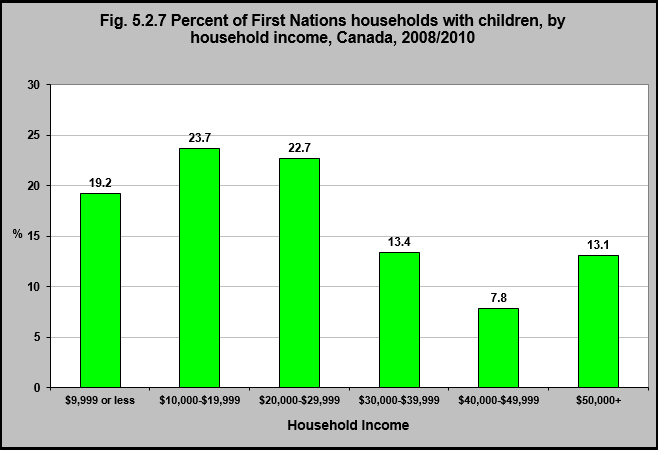Percent of First Nations households with children, by household income, Canada, 2008/2010

Source: CICH graphic created using data adapted from the First Nations Regional Longitudinal Health Survey (RHS) 2008/10, National report on adults, youth and children living in First Nations Communities. https://fnigc.ca/sites/default/files/docs/first_nations_regional_health_survey_rhs_2008-10_-_national_report.pdf -accessed August 15, 2017.
In 2008/2010, 42.9% of First Nations children lived in households with incomes of less than $20,000.
In 2013/2015, according to the First Nations Regional Early Childhood, Education and Employment Survey, the number of First Nations children living in households with incomes less than $20,000 was slightly lower at 39.2%.1
1First Nations Information Governance Centre, Our Data, Our Stories, Our Future: The National Report of the First Nations Regional Early Childhood, Education and Employment Survey. 2016. http://fnigc.ca/sites/default/files/docs/fnigc_fnreees_national_report_2016_en_final_28072016_0.pdf-accessed August 25, 2017.
Implications
When children live in conditions of chronic poverty, they are more likely to have cognitive and social-emotional deficits (which impacts school success and academic trajectories); poorer health outcomes related to nutritional deficiencies or inadequacies; higher rates of unintentional injuries and related deaths; as well as higher rates of mental health and substance abuse issues as adults.
